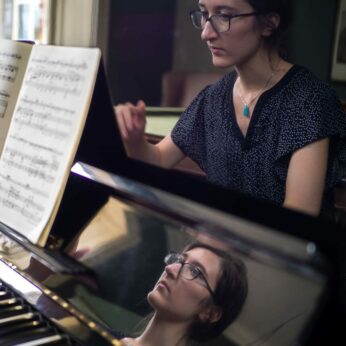Composer: Béla Bartók (b. 1881 - d. 1945)
Performance date: 27/06/2022
Venue: Bantry House
Composition Year: 1926
Duration: 00:12:23
Recording Engineer: Eduardo Prado, Ergodos
Instrumentation: pf
Instrumentation Category:Solo
Artists:
Nathalia Milstein -
[piano]

This programme features works from four master composers, who were also extraordinary pianists. And while the styles in structure, harmony and underlying expressions are totally different, they share some interesting characteristics. In the first place, all of them are very difficult to play well.
1926 is designated Bartók’s ‘Piano Year’ by musicologists and the year when his career really took off at an international level. There was a creative shift from Beethovian intensity to Bachian craftsmanship. Each of the three movements is in classical form and the Sonata as a whole is a paradigm of the new classicism Bartók was working towards, drawing on the old Baroque keyboard masters, like Scarlatti.
Bartók’s Piano Sonata begins with one of the most stylish openings in the programme. The entire first movement is rhythmically exciting and the interaction of the different hands is a masterpiece of harmony and melodic genius. It’s exciting and modern and creates a sense of anticipation that is rewarded with an increase in tempo as the movement moves towards the close. The second movement, by contrast is subdued with a denser texture and chord clusters that emphasises harmonic dissonances in way that is edgier and more disruptive than the previous movement’s rapid melodies. The third movement has a jazzy syncopation that keeps the listener on edge. The left hand is very percussive and pushes the movement forward to a sudden finish, while throughout, the right hand melody contains elements of Bartók’s characteristic folk-music influences. The rich contrapuntal sections in the Sonata show the influences of the early masters of that instrument. Bartók himself was a pianist of extraordinary talent and the compositional devices used in his piano works from 1926 show how far he was testing the possibilities of what the piano can do. And so in the Sonata we hear not only the rapid melodies for the dextrous fingers, but also the grounding percussive qualities and rhythmic potentials.
Helen Dawson
Copyright © 2024 West Cork Music. All rights reserved.
Designed and developed by Matrix Internet